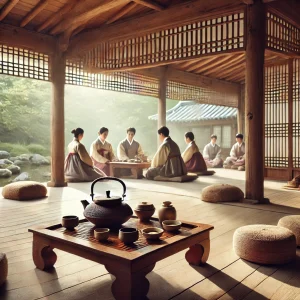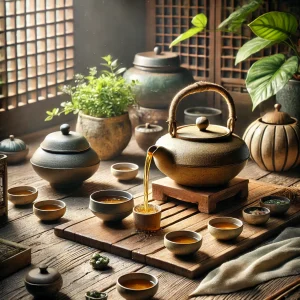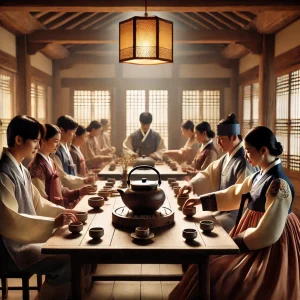
Korean Tea Ceremony Exploring the Rituals, Meanings, and Harmony of Darye
The Essence of Korean Tea Ceremony: Darye
The Darye (다례) tea ceremony, which translates to “etiquette for tea,” is deeply rooted in Korean history and philosophy. With over 1,500 years of tradition, it emphasizes harmony, respect, and reflection, drawing influences from both Buddhism and Confucianism. Unlike Japanese tea ceremonies, which are highly formalized, the Korean tea ceremony seeks simplicity, with a peaceful approach to savoring tea in a mindful atmosphere
Historical Background and Cultural Significance
Korea’s tea culture began as early as the Silla Dynasty (57 BC–935 AD) and gained prominence through Buddhist monks who used tea for meditation. By the Goryeo Dynasty (918-1392), tea was part of Buddhist rituals and later expanded during the Joseon Dynasty (1392-1910) under Confucian influence, emphasizing social harmony and respect for elders
These ceremonies were then refined into daily and special occasion practices, integrating tea as both a cultural and spiritual practice.
Key Rituals and Components of the Korean Tea Ceremony
The Darye ceremony is a gentle and structured process designed to inspire calm and presence. Some of its core elements include:
- Teaware: Korean tea sets often include a cooling bowl, teapot, and teacups made from earthy materials that blend with nature. Each piece is chosen for its ability to enhance tea’s natural beauty and scent.
- Three-Part Process: The ceremony follows three main steps:
- Preparing the tea leaves and teapot.
- Steeping the tea at a carefully controlled temperature.
- Serving with both hands, a gesture symbolizing respect and unity
- Symbolic Gestures: The host supports the right hand with the left while pouring, representing humility, and serves guests in order of seniority to show respect.

Understanding the Spiritual and Symbolic Meanings
At its core, Darye promotes mindfulness and emotional balance. Drawing from Buddhist philosophies, it encourages quiet reflection and appreciation of simple moments. Confucian values add a social dimension, using tea ceremonies as a time for family and community bonding, which fosters respect, patience, and humility.
- Simplicity and Harmony: Korean tea ceremonies are intentionally simple, focusing on minimalism in action and design, which symbolizes clarity and a connection to nature.
- Mindfulness: Every gesture, from preparing the tea to savoring each sip, is an exercise in presence and mindfulness. This aligns with Seon (Zen) Buddhist practices, where each participant is encouraged to fully engage in the moment.
Types of Korean Tea and Their Meanings
Korean tea ceremonies commonly feature green tea (nok-cha), which is harvested seasonally and categorized into various grades. From early spring’s Ujeon (first pluck) to the richer Daejak of summer, each tea grade offers unique flavors and health benefits. Traditional ceremonies may also feature teas like roasted barley (bori-cha) or ginger (saenggang-cha) during colder months for added warmth and variety
Experiencing Korean Tea Culture Today
To immerse in Korean tea culture, visitors can explore traditional teahouses, known as chatjip, which often feature tranquil gardens and serene decor. Additionally, the Boseong Green Tea Festival in South Korea’s famous tea-producing region offers hands-on experiences in tea making and tasting, showcasing Korea’s dedication to preserving its tea heritage
Korean Tea Ceremony Etiquette and Tips for Visitors
For those new to the ceremony, here are some key points to keep in mind:
- Show respect: Arrive on time, dress modestly, and maintain a calm demeanor.
- Savor the experience: Instead of rushing, take each sip with appreciation.
- Respect the hierarchy: Tea is served in order of age or rank, starting with the eldest.
Whether participating in a Darye ceremony or simply enjoying a quiet cup, Korean tea culture offers a peaceful way to connect with tradition, mindfulness, and the natural world.



